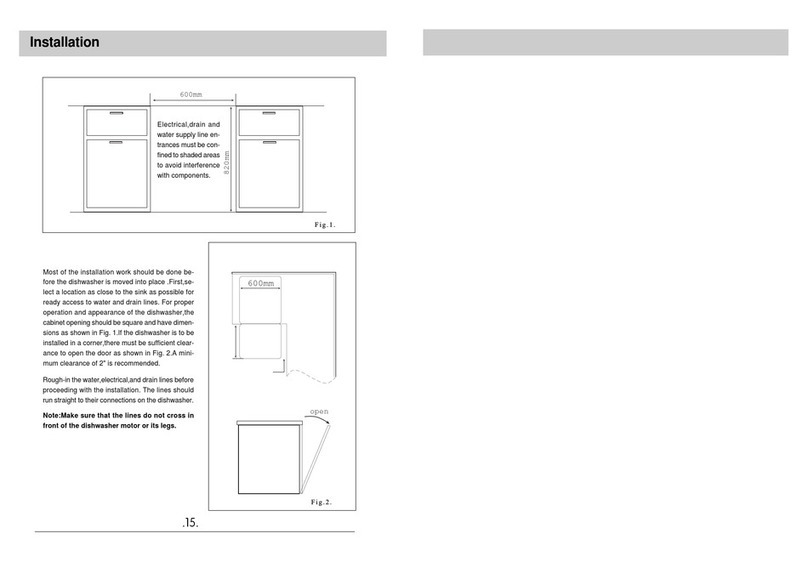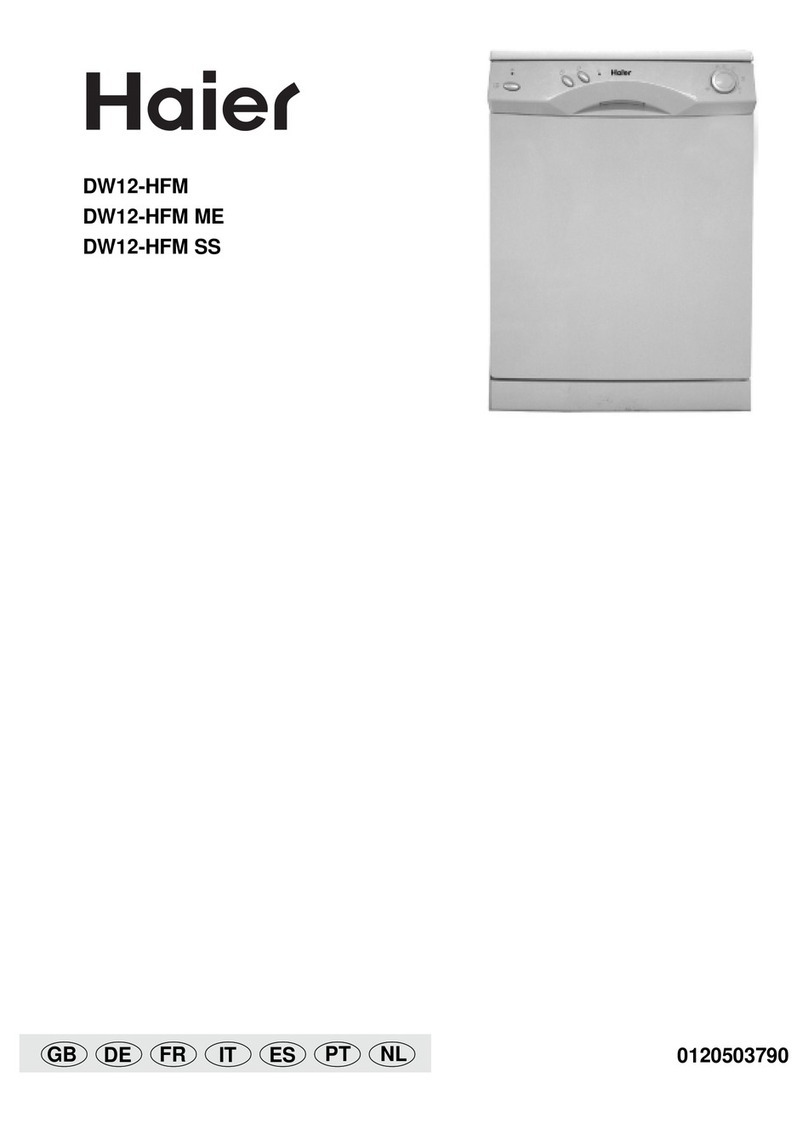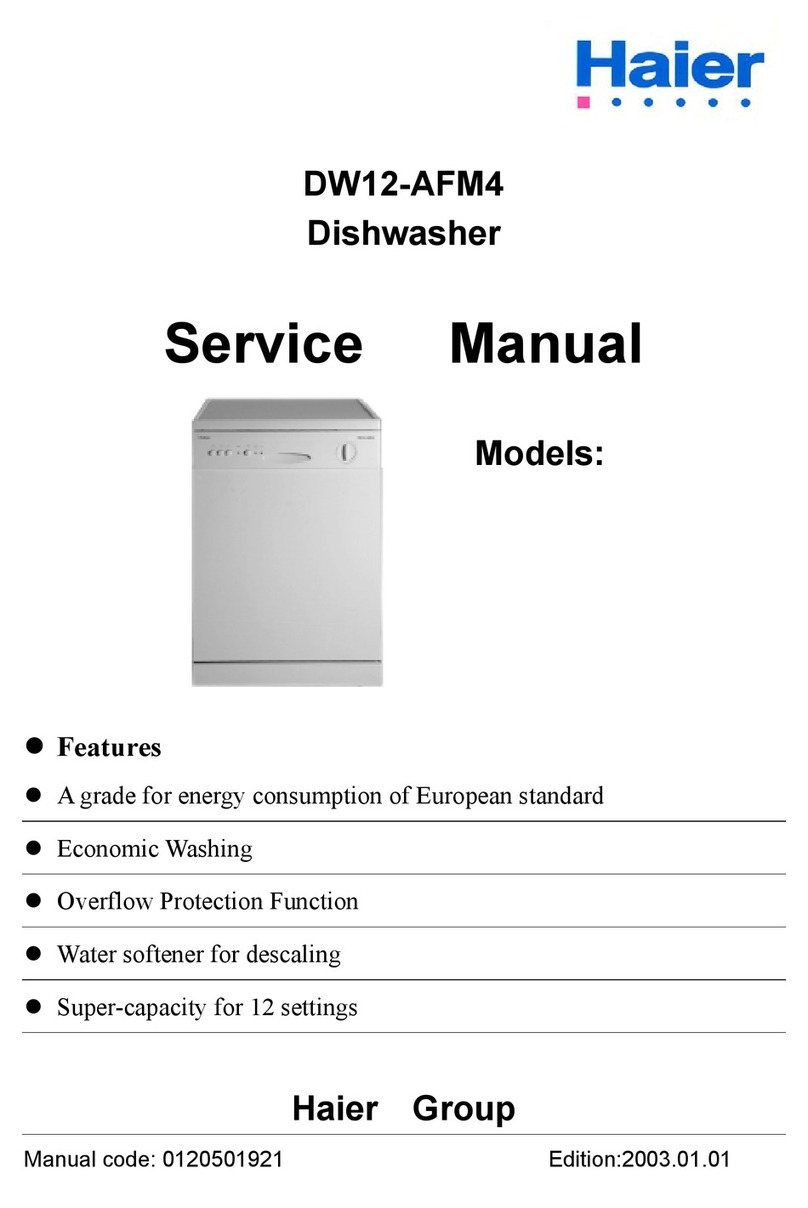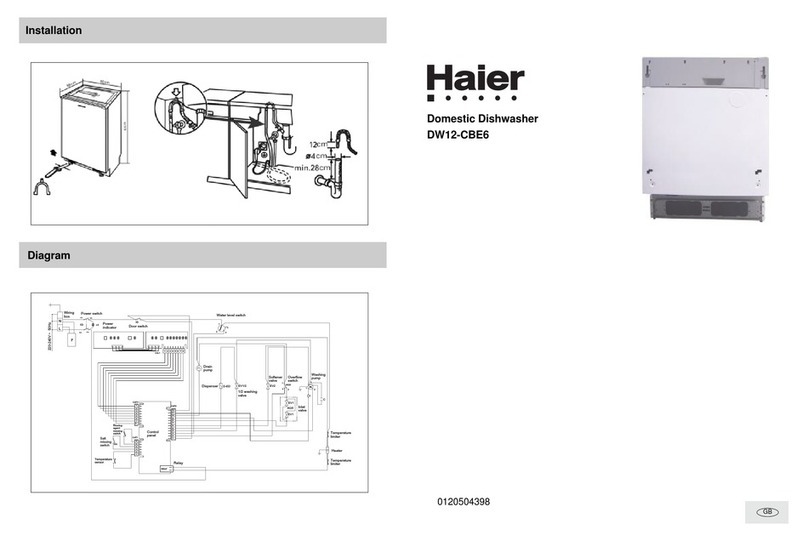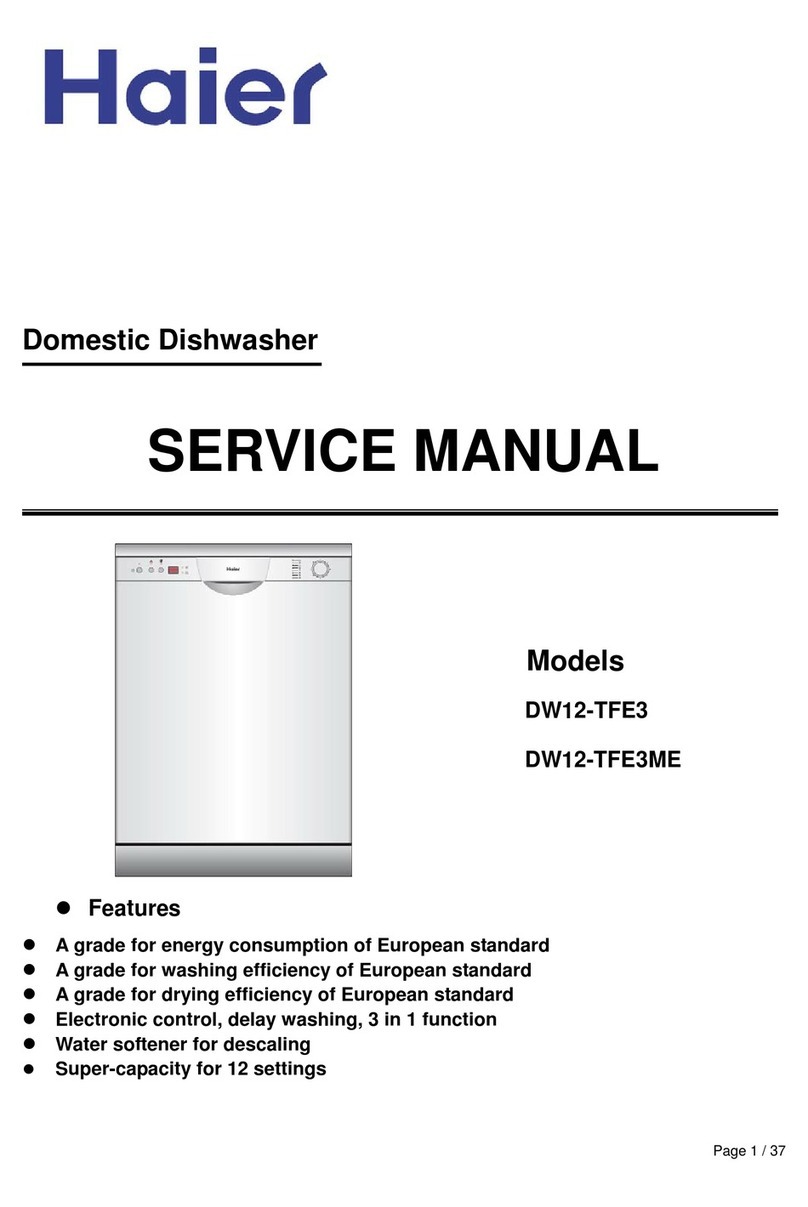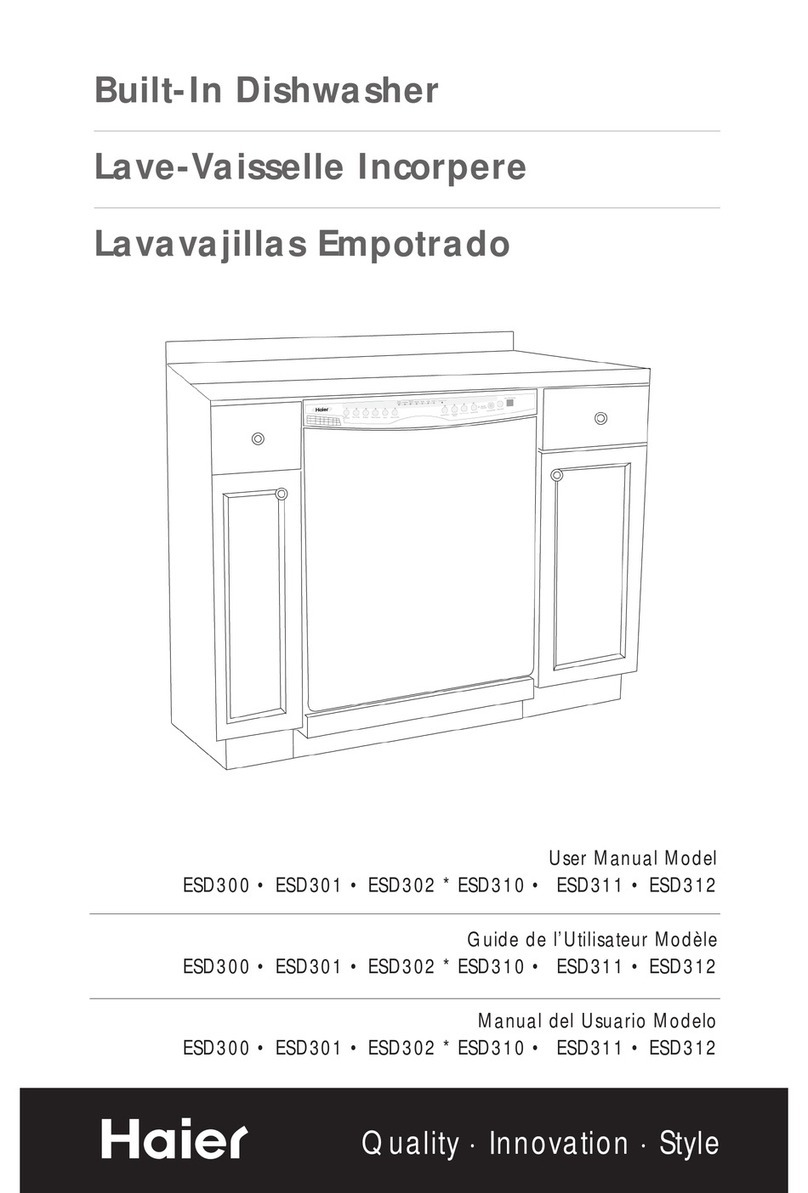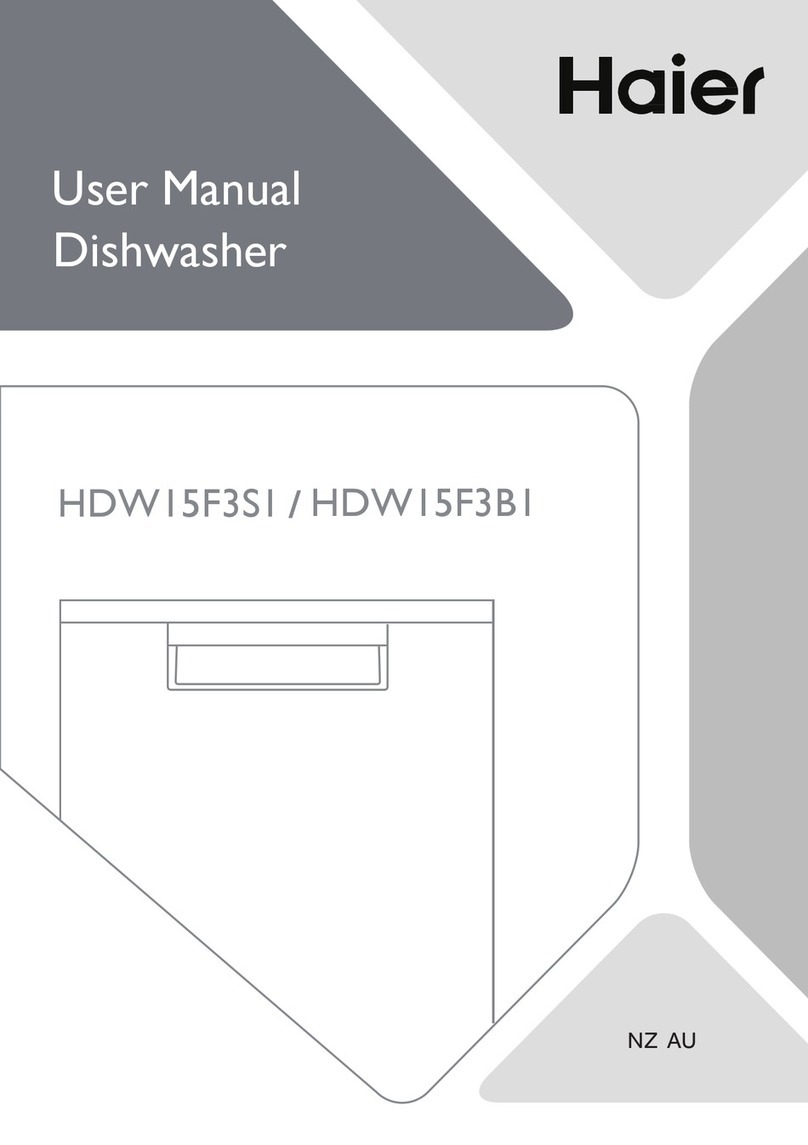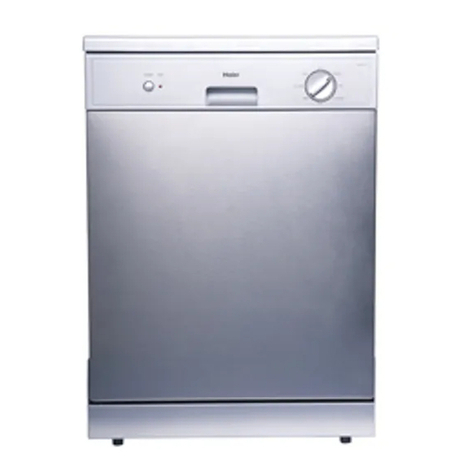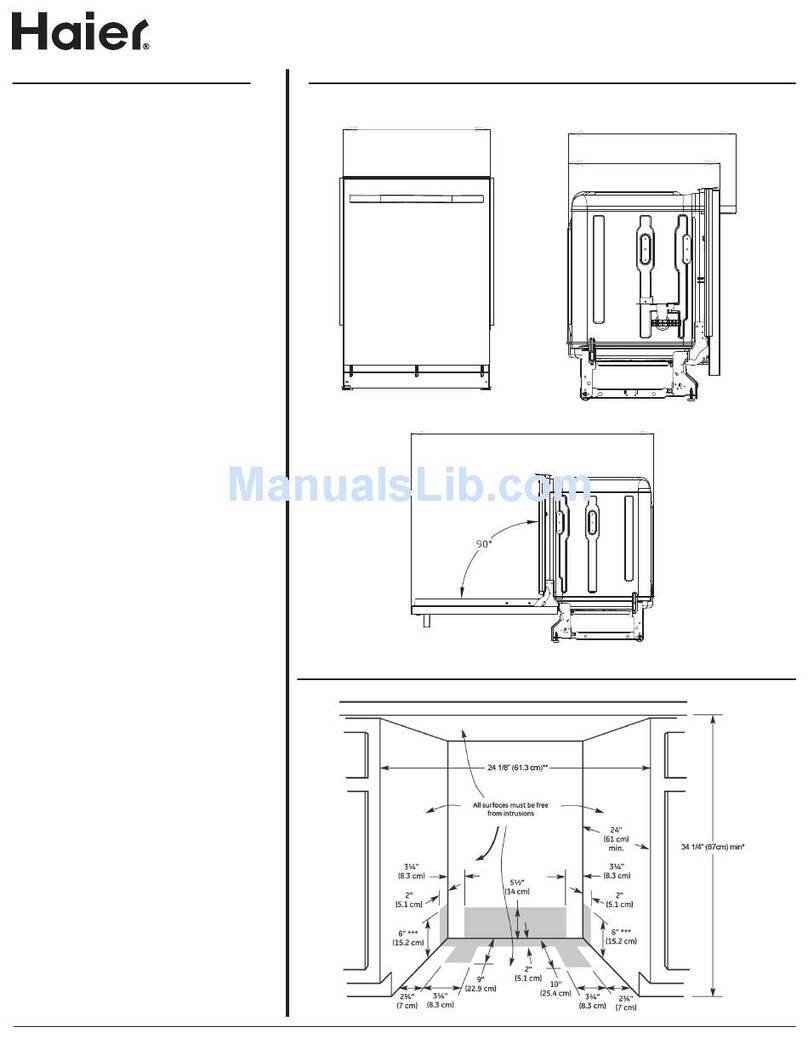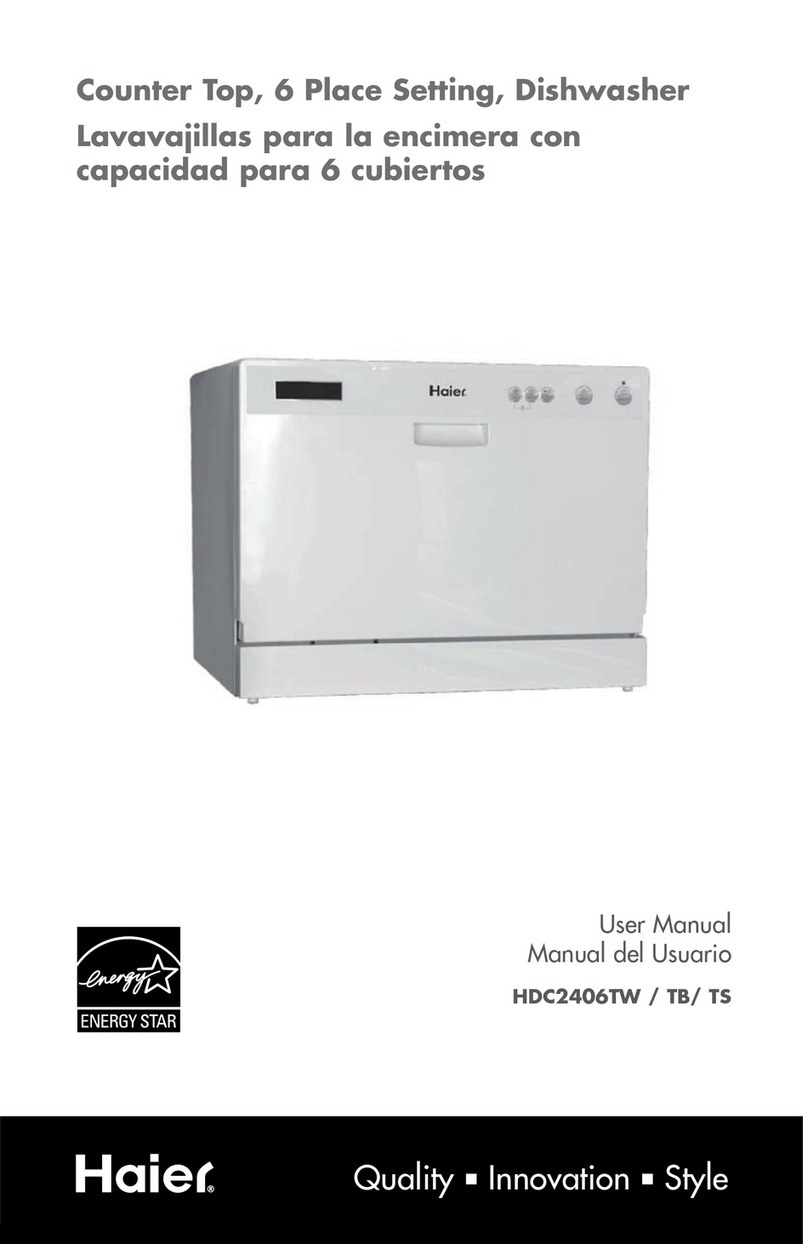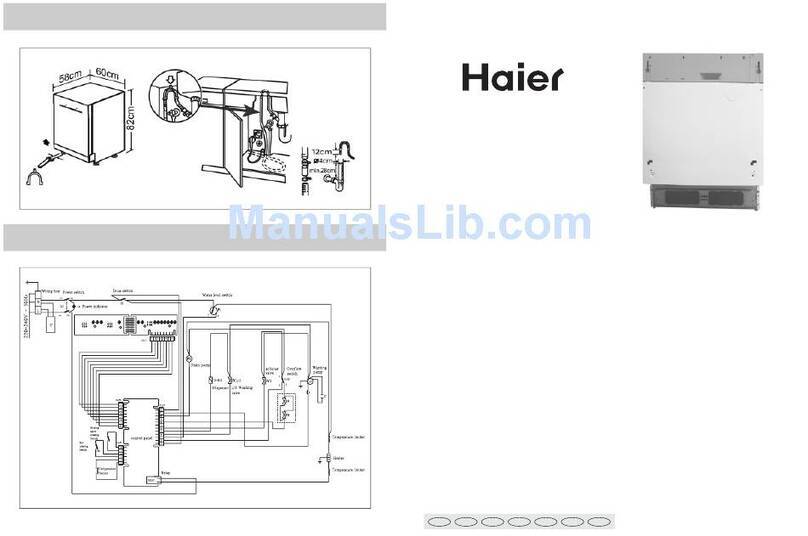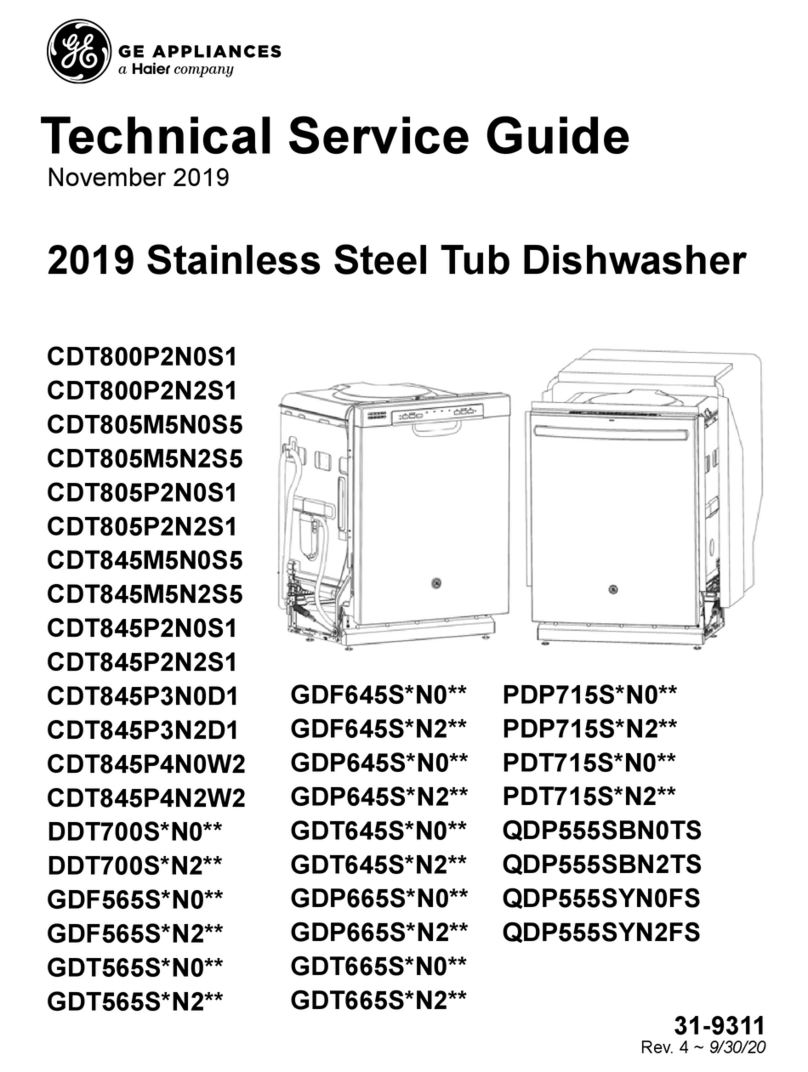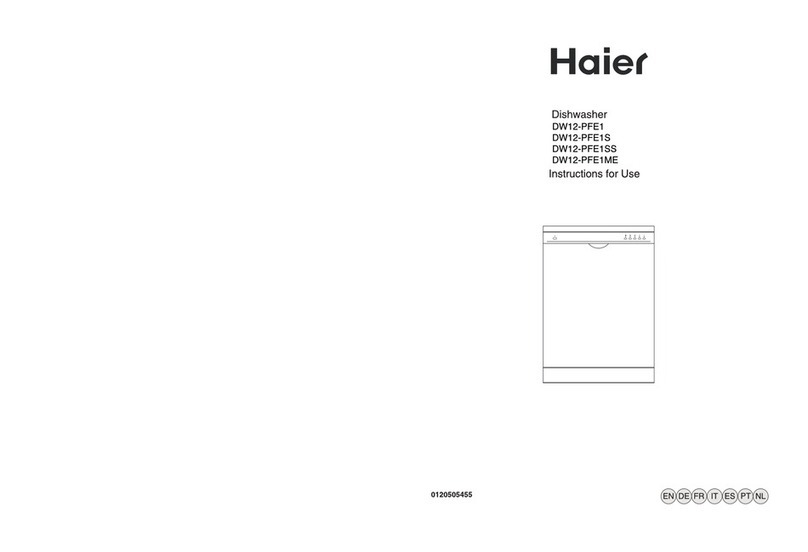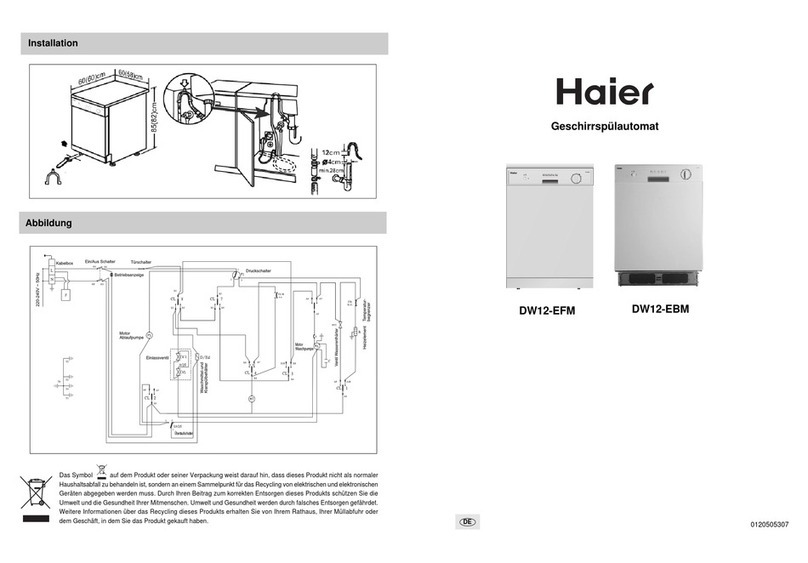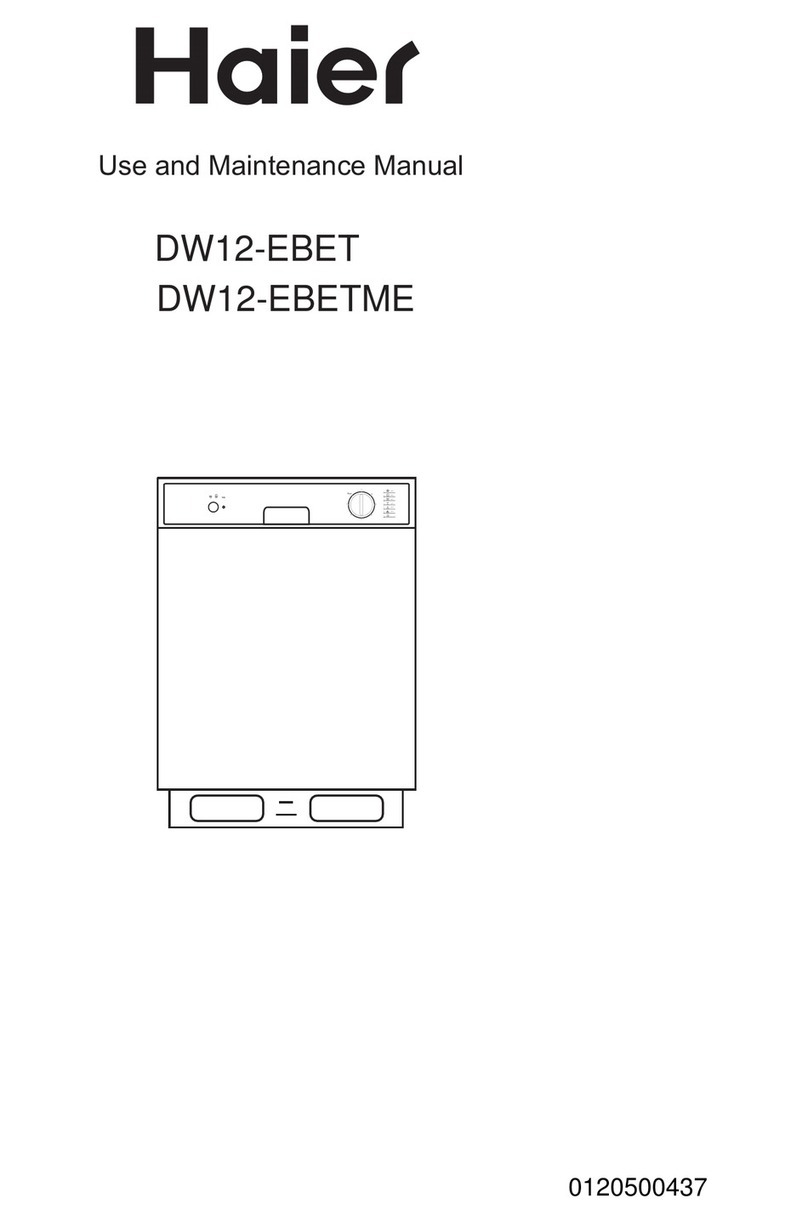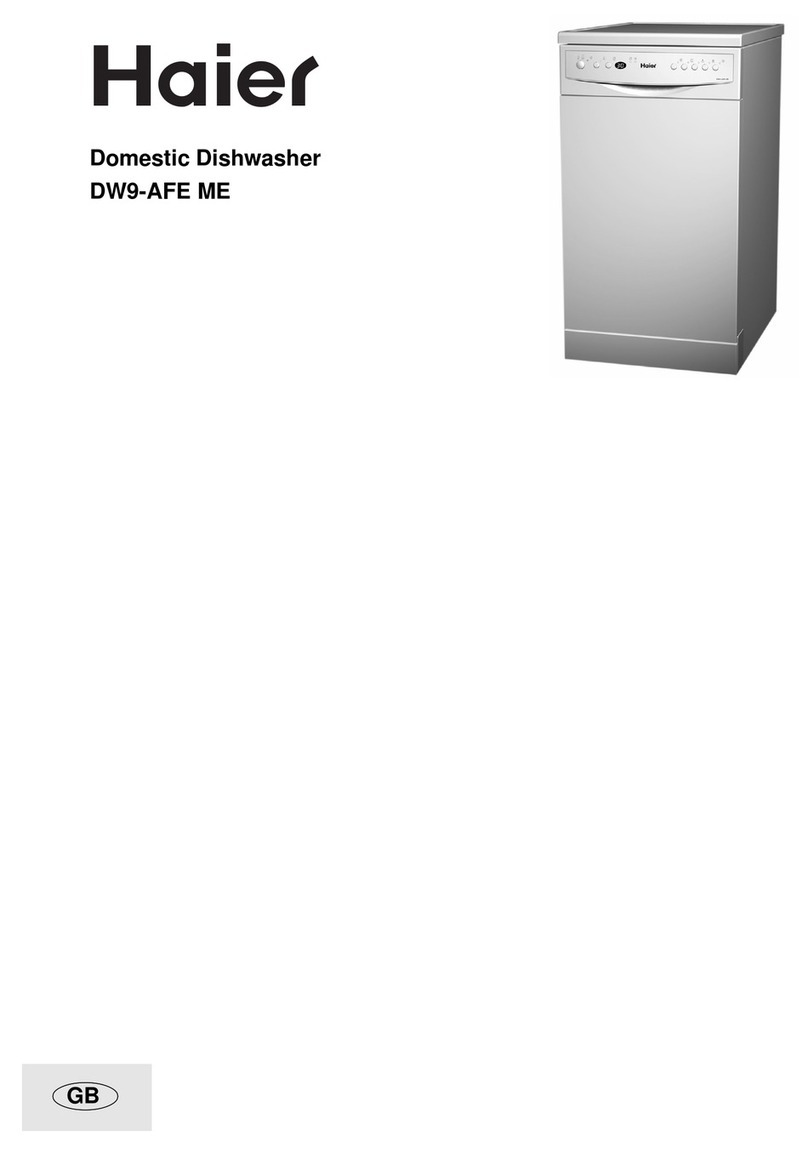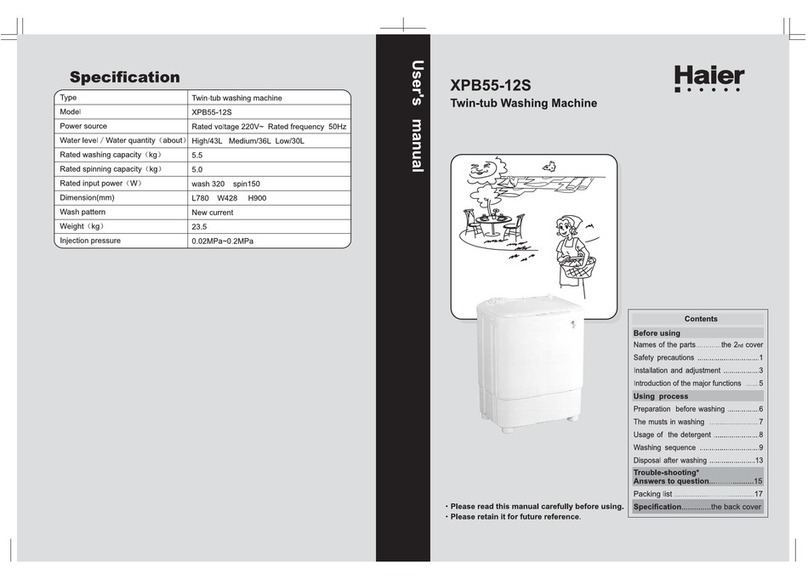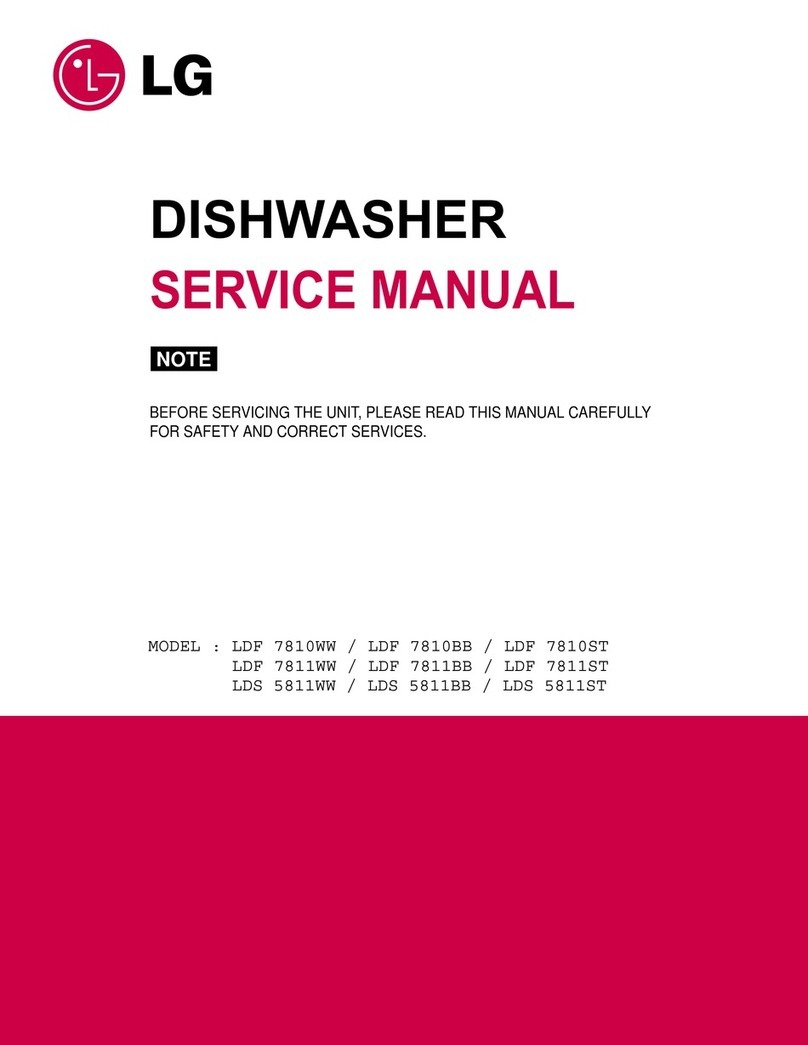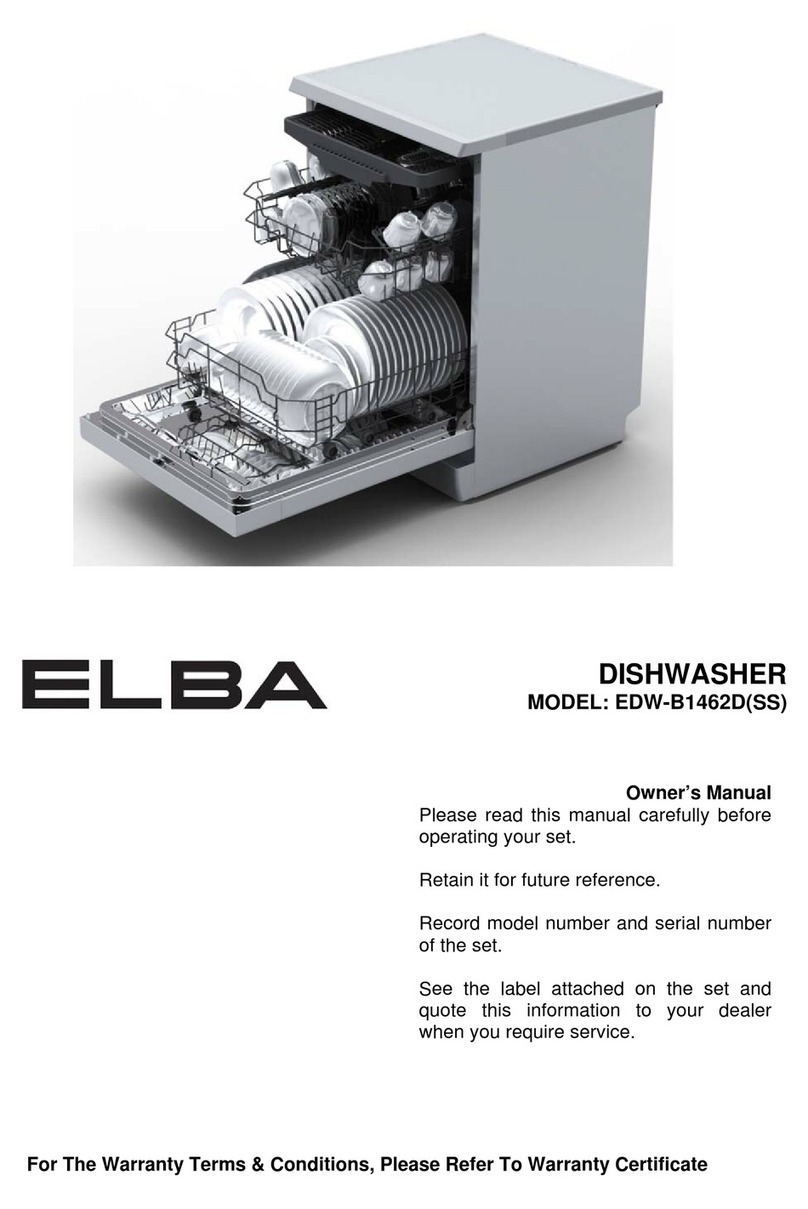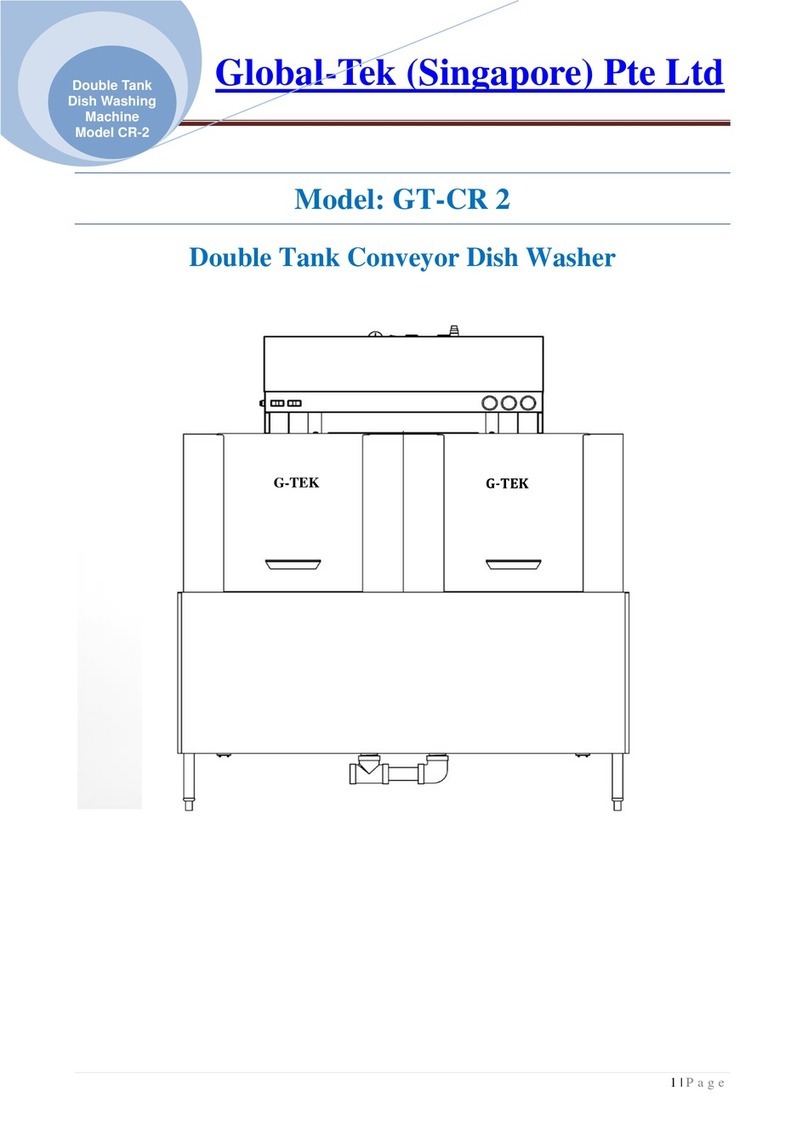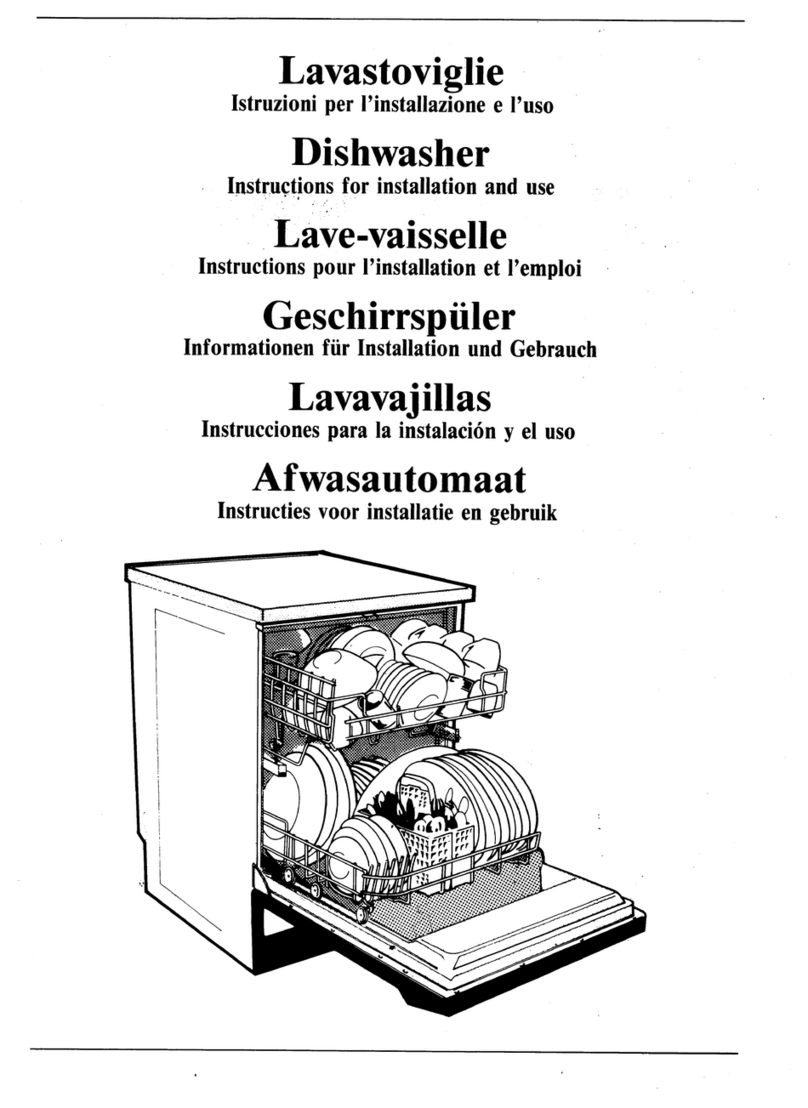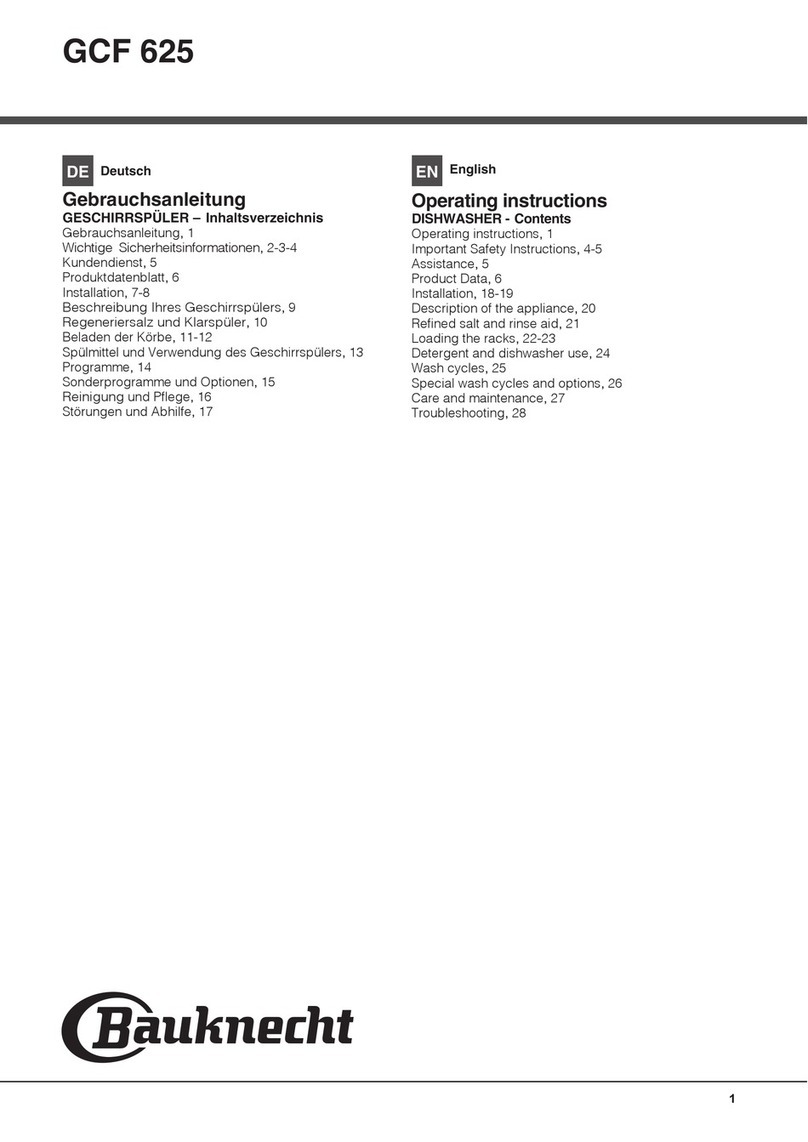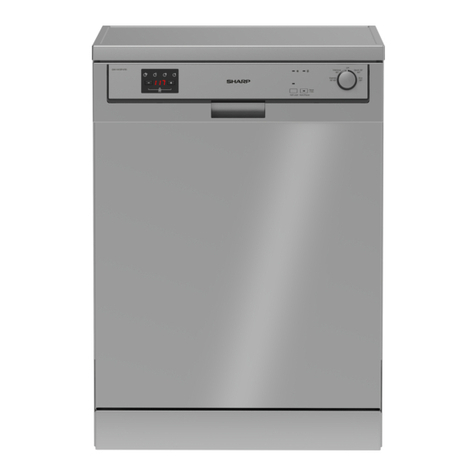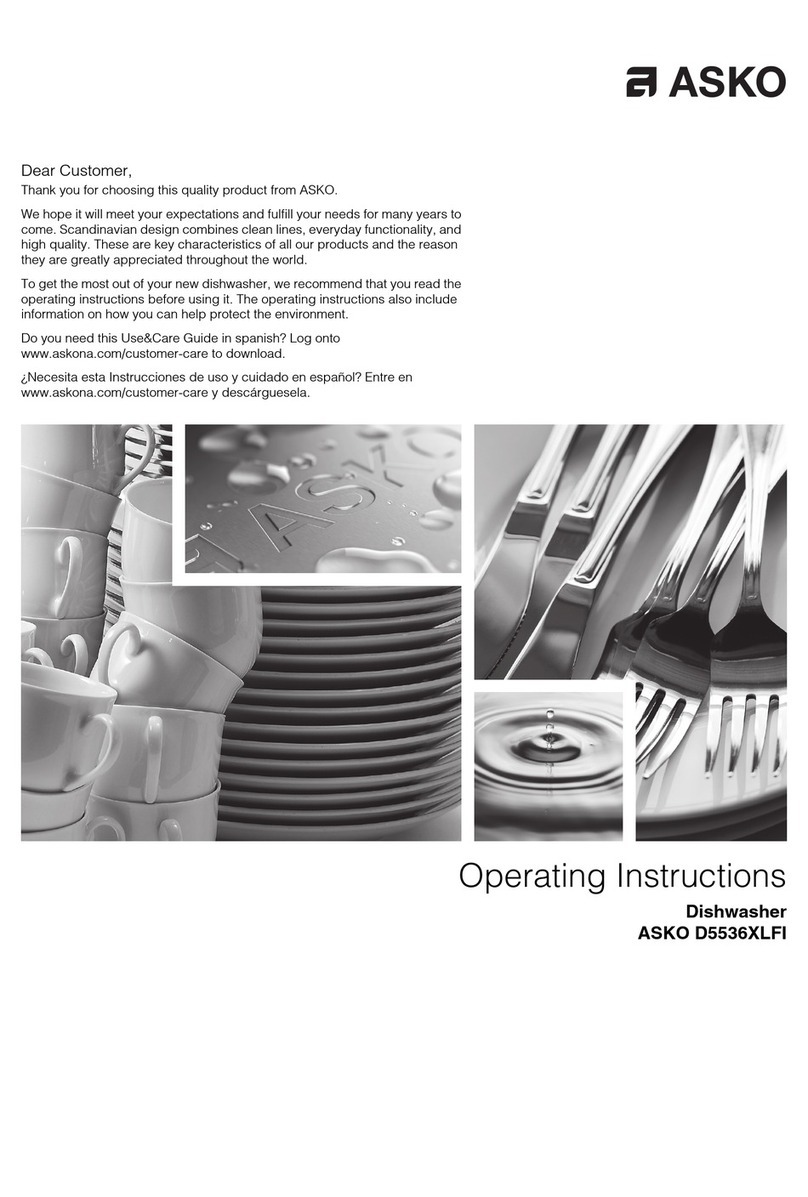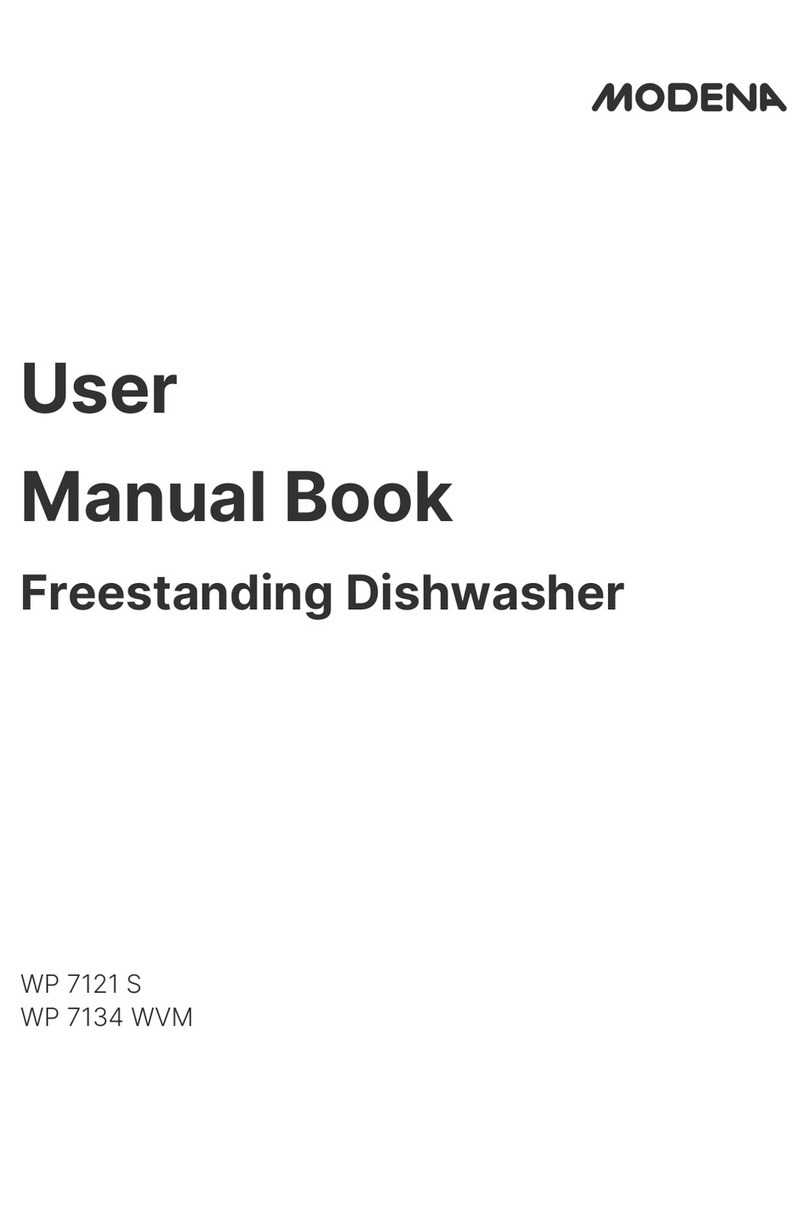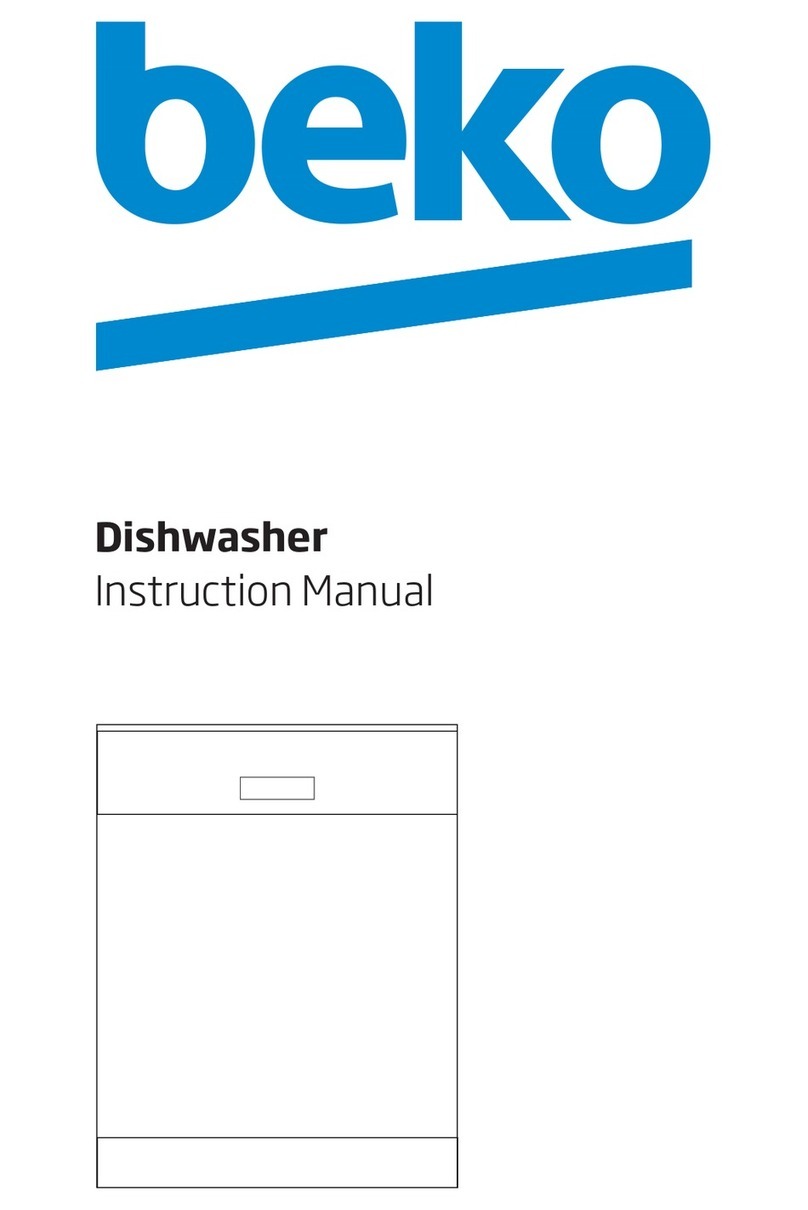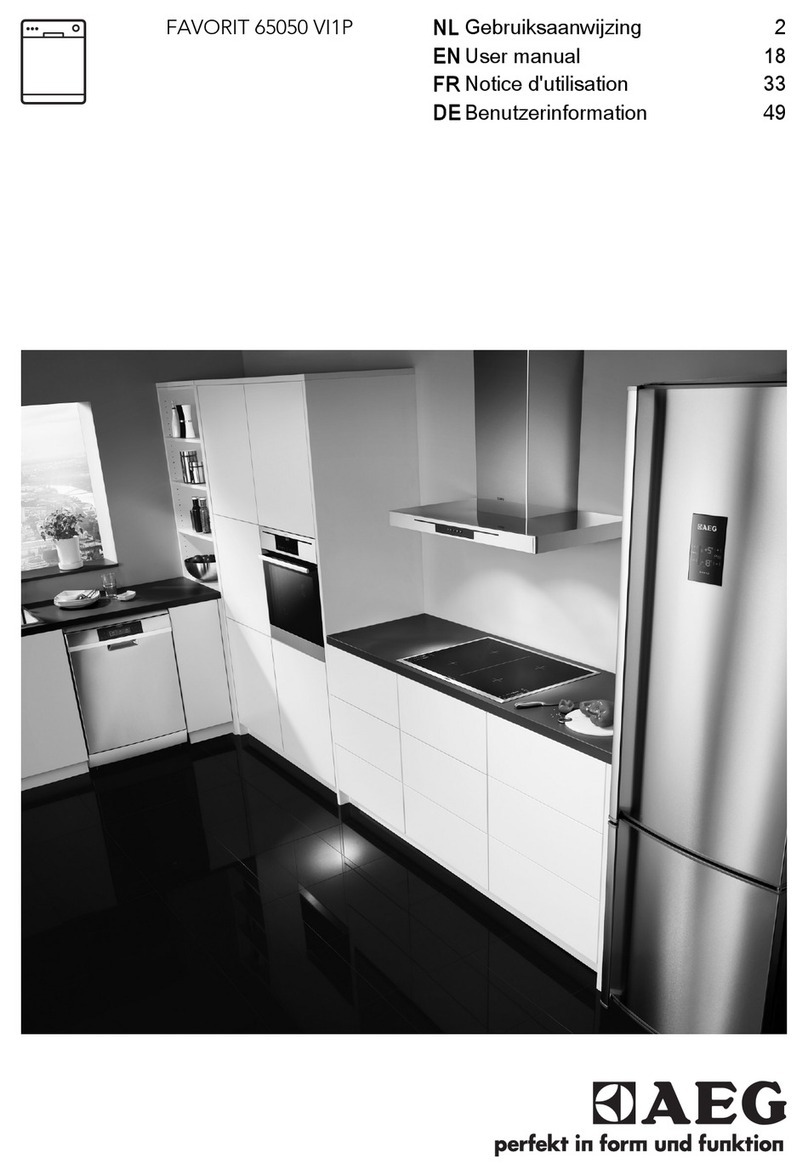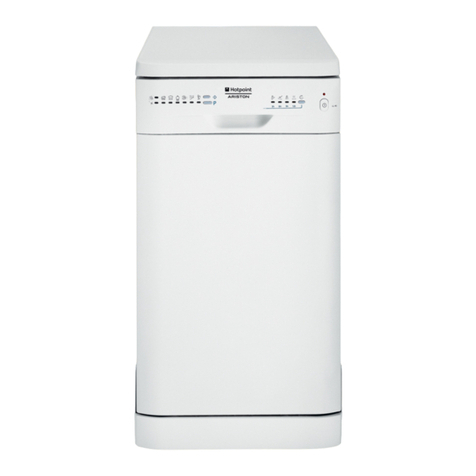fig.2
Cleaning and Special Maintenance
Filter Assembly
For best performance and results, the filter assembly must be
cleaned.
The filter efficiently removes food particles from the wash water,
allowing it to be recirculated during the cycle. For this reason, it
is advisable to remove the larger food particles trapped in the
filter after each wash cycle by rinsing the semi-circular filter and
cup (A) under running water. To remove the filter assembly, pull
on the cup handle in the upward direction. The entire filter as-
sembly (made up of the semicircular filter (A) and the fine filter
(B)) should be cleaned at least once a month. To clean the filter
and fine filter, use a cleaning brush. Then, reassemble the filter
parts as shown in the figures below and refit the entire assembly
in the dishwasher, positioning it in its seat and pressing downward.
The dishwasher must never be used without the filters. Improper
replacement of the filters may reduce the performance of the
appliance and damage dishes and utensils.
Cleaning the Spray Arms
It may happen that food particles become encrusted on the
sprayer arms and block the hole (see "Close up view [interior]",
letters C-F). Check the sprayer arms periodically and clean them
when needed.
Installation
Positioning the Appliance
Position the appliance in the desired location. The back should
rest against the wall, and the sides along the adjacent cabinets
or wall. The dishwasher is equipped with water supply and drain
hoses that can be positioned to the right or left to facilitate proper
installation.
Levelling the Appliance
Once the appliance is positioned, adjust the feet (screwing them
in or out) of the dishwasher until it is level. In any case, the appli-
ance should not be inclined more than 2°. If the appliance is level,
it will help ensure proper performance.
Cold Water Connection
Connect the cold water supply hose to a threaded 3/4 (gas) con-
nector and make sure that it is fastened tightly in place (see fig.
1).
If the water pipes are new or have not been used for a prolonged
period of time, let the water run to make sure that the water is
clear and free of impurities. If this precaution is not taken, there is
a risk that the water inlet can get blocked and damage the
appliance.
Hot Water Connection
The water supply to the appliance can also be connected to the
house's hot water line (centralised system, heating system), as
long as it does not exceed a temperature of 60°C.
In this case, the wash cycle time will be shortened by about 15
minutes and the wash efficiency slightly reduced.
The connection must be made to the hot water line following the
same procedures as for the connection to the cold water line.
Drain Hose Connection
Insert the drain hose into a drain pipe with a minimum diameter
of 4cm, or let it run into the sink, making sure to avoid bending
or crimping it. Use the special plastic support that comes with
the appliance (see fig .2). The free end of the hose must be at a
height between 40 and 100 cm and must not be immersed in
water.
Attention:
The special plastic hose support must be solidly fastened to
the wall to prevent the drain hose from moving and allowing
water to spill outside the drain.
Electrical Connection
After making sure that the voltage and frequency values for the
current in the home correspond to those on the rating plate
(located on the stainless steel inner door of the appliance) and
that the electrical system is sized for the maximum voltage on
the rating plate, insert the plug into an electrical socket which is
earthed properly (the earthing of the appliance is a safety re-
quirement mandated by law).
If the electrical socket to which the appliance must be connected
is not appropriate for the plug, replace the plug rather than using
adaptors or the like as they could cause overheating and burns.
A
B
Troubleshooting
It may occur that the dishwasher does not function or does not
function properly. Before calling for assistance, see what can be
done first: have you forgotten to press one of the buttons or to
perform an essential operation?
The Dishwasher Does Not Start
Have you checked whether:
- the plug is pushed into the socket correctly;
- the power is on in the house;
- the door is closed properly;
- the ON-OFF switch is on "ON";
- the water supply is turned on.
The Dishwasher Does Not Load Water
Have you checked whether:
- the water is turned on and the hose is connected properly;
- the water supply to the house is on and has sufficient pressure;
- the water supply hose is crimped or bent;
- the filter for the water supply hose is clogged.
The Dishes Are Not Clean
Have you checked whether:
- the water is turned on and the hose is connected properly;
- the water supply to the house is on and has sufficient pressure;
- the water supply hose is crimped or bent;
- the filter for the water supply hose is clogged.
The Dishwasher Does Not Drain
Have you checked whether:
- the drain hose is crimped or bent.
Lime Deposits or a White Film Form on the Dishes
Have you checked whether:
- the lid of the salt container is closed properly;
- the rinse aid dosage is correct.
If, despite all these checks, the dishwasher still does not function
and/or the problem persists, contact the nearest authorised ser-
vice centre and provide the following information:
- the nature of the problem;
- the model type number (Mod...) and the serial number (S/N...),
which are indicated on the plate located on the side of the inner
part of the door.
Never call unauthorised technicians and refuse to allow parts
to be installed that are not original spare parts.
.10.
.9. GB GB
fig.1
The symbol on the product or on its packag-
ing indicates that this product may not be treated
as household waste. Instead it shall be handed over
to the applicable collection point for the recycling
of electrical and electronic equipment. By ensuring
this product is disposed of correctly, you will help
prevent potential negative consequences for the
environment and human health, which could other-
wise be caused by inappropriate waste handling of
this product.
For more detailed information about recycling of this
product, please contact your local city office, your
household waste disposal service or the shop where
you purchased the product.
Warning
The appliance is to be connected to the water mains
using new hose-sets and that old hose-sets should
not be reused.
